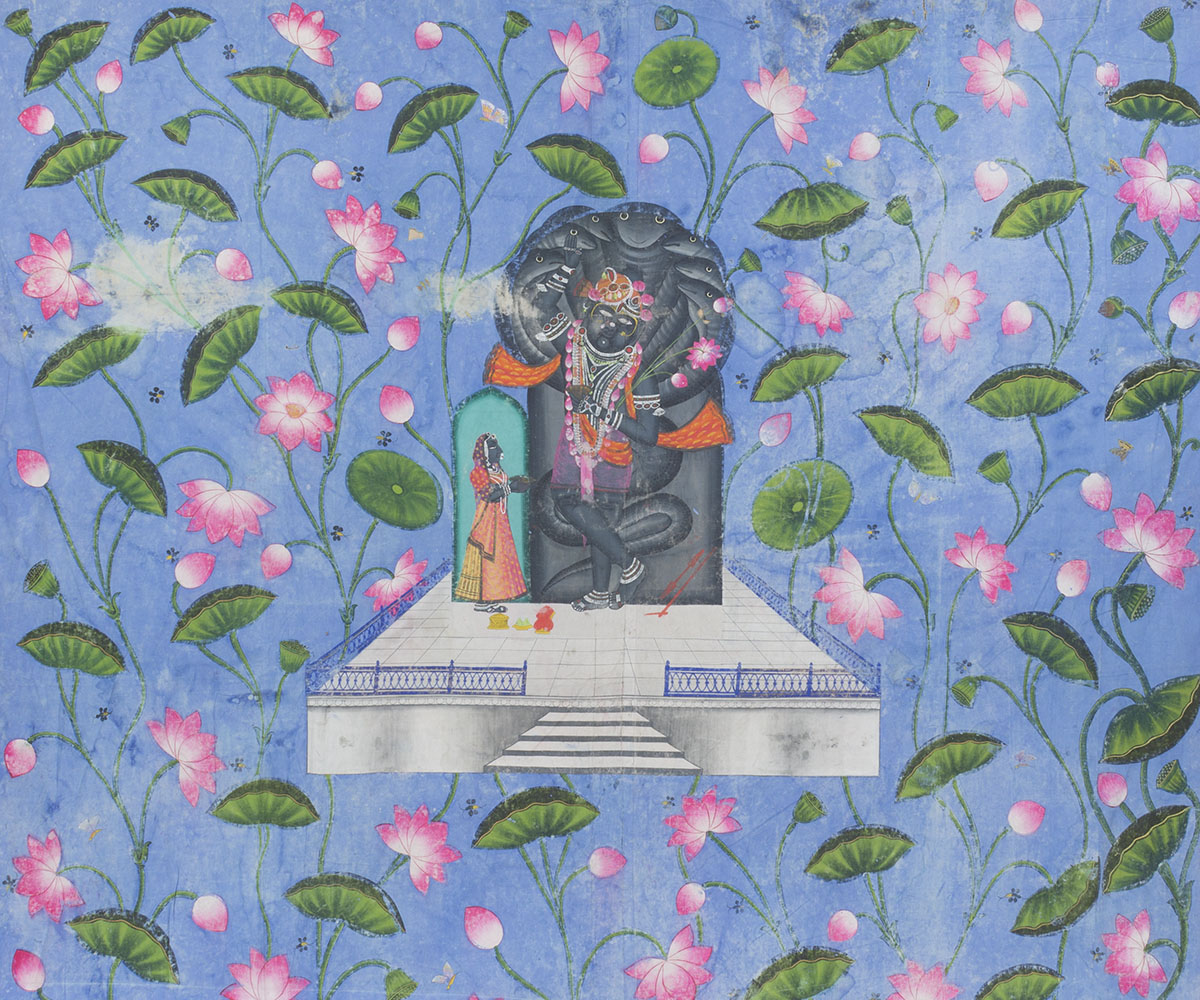
A popular floral motif used in textiles, the symbol of lotus bears significant iconographical importance in Hindu, Buddhist and Jain traditions.
According to Hindu texts and mythology, an eight-petalled lotus emerges from the navel of the preserver of the universe, Vishnu and upon it, the creator of the universe, Brahma, sits. Here, the lotus comes to symbolize the universe in its entirety. Lotus is also associated with the feet of Krishna and the Hindu goddess of wealth, Lakshmi. It also represents fertility and material wealth, along with purity, peace and cosmic harmony in Buddhist and Jain traditions.
The lotus, because of its religious associations, is a motif used commonly across iconography. In textiles, the symbol can be found in embroideries and textiles such as kantha, kasuti, chamba rumals, pichwais and is woven into ikat, phulkari and paithani. In kantha, the lotus as padma forms the centre of the universe and the eight-petalled lotus, astadal padma, is a frequently employed symbol. The lotus in paithani textiles mirrors the depictions in Ajanta murals and is naturalistic. The lotus is also a significant part of mandala compositions and features in Tibetan textiles particularly in the carpets where it is depicted in its three stages: as a bud, a semi-open flower and as a blooming flower.
First Published: April 21, 2022
Last Updated: July 26, 2023



